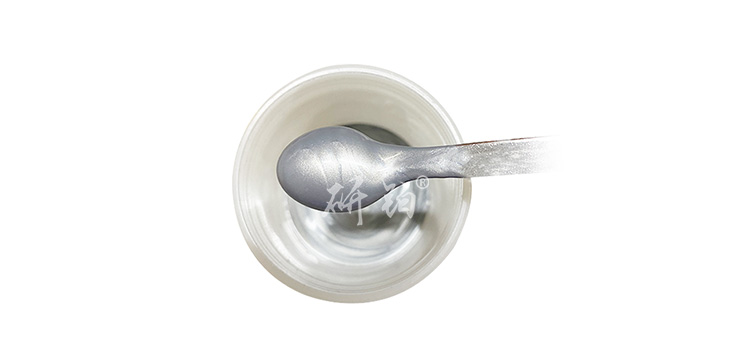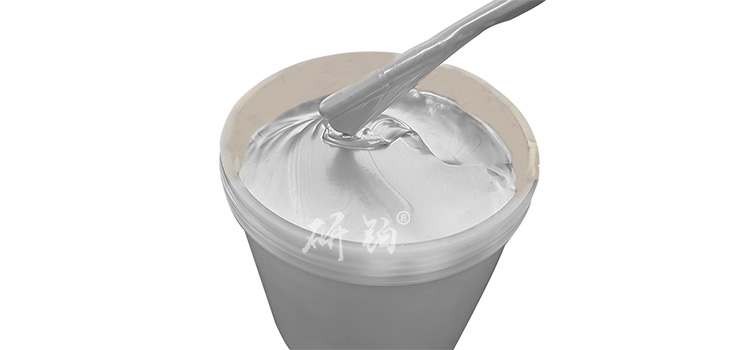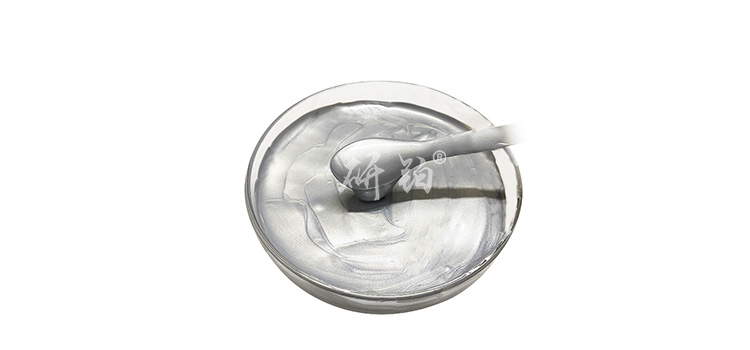

Hotline:0755-22277778
Tel:0755-22277778
Mobile:13826586185(Mr.Duan)
Fax:0755-22277776
E-mail:duanlian@xianjinyuan.cn
The core driving force for the development of the photovoltaic industry is the continuous decline in electricity costs, which drives the continuous improvement of investment returns. Cost reduction and efficiency improvement are the eternal pursuit of industrial development. The photovoltaic industry undergoes a technological iteration almost every 2-3 years, and cell conversion efficiency is the most critical indicator. As the efficiency of PERC gradually approaches the efficiency limit of 24.5%, heterojunction cells (HJT) are regarded as a revolutionary technology for the next generation of photovoltaic cells. At present, the main problem restricting the development of HJT batteries is cost. Firstly, the equipment investment is high (equipment cost is about 450 million yuan/GW). Secondly, the amount of silver paste used is large, and the cost-effectiveness (efficiency/cost) is far inferior to PERC technology.
At present, the cost reduction path of HJT batteries is very clear: silicon wafer thinning, reductionsilver pasteConsumption and equipment cost reduction (according to industry sources, the localization of HJT equipment is increasing, and equipment costs are expected to decrease to 350 million yuan/GW by the end of the year). In the cost of HJT non silicon cells, the main differences from PERC are silver paste and target materials, with silver paste accounting for about 47% of non silicon costs, which is the main cost reduction target.
HJT silver pasteThe feasible ways to reduce costs mainly include:
(1) Localization of low-temperature silver paste
withLow temperature silver pasteWith the promotion of localization, its price is expected to follow the trend of high-temperature silver paste prices. In the absence of significant changes in industry technology, it is predicted that it will return to a relatively balanced price of around 4.63 million yuan/ton. The localization of low-temperature silver paste can reduce the cost of silver paste by about 2000 yuan/kg, including more than 1000 yuan in international cold chain transportation costs.
(2) Multi main gate (MBB) and sub gate refinement
MBB technology increases the number of main gates, which is beneficial for shortening the lateral current collection path within the battery cell, reducing battery power loss, and improving conductivity. Currently, MBB technology in the industry is breaking through towards 12BB. In fact, the ultimate goal is to have no main gate, but currently the patent is held overseas and is still in the protection period in the short term. According to data, the cost of using 5BB technology silver paste for HJT batteries is about 1.9-2.1 yuan/piece, and the cost of using MBB technology silver paste is about 1.1-1.2 yuan/piece. Refining the secondary grid can reduce shading losses, improve the utilization of incident light, and reduce the amount of silver paste used. The current mainstream fine grid screen opening of HJT is between 35-40 μ m. Based on the trend of narrowing fine grids in the photovoltaic industry year by year, it is expected to decrease to 28-30 μ m in the next year. By optimizing the design of the main gate pattern and thinning the secondary gate, the consumption of silver paste per chip can be reduced by 15-20%; By step-by-step printing of the main and auxiliary gates, the solid content of the main gate silver paste can be reduced, which can further reduce the silver paste consumption by 10-15%; MBB fine line printing technology optimizes the amount of silver paste while improving battery conversion efficiency, reducing the total amount of silver paste by 8mg/W.
(3) Silver coated copper powder replaces pure silver powder
According to statistics, the global silver production is about 30000 tons, and the consumption in the photovoltaic field is 2500-3000 tons, accounting for about 10%. Low silver conversion is a very important task in the photovoltaic industry. By replacing silver with some base metals such as "silver coated copper" while ensuring line resistance and welding tension, the manufacturing cost of silver paste can be significantly reduced. HJT batteries are processed at low temperatures, creating the possibility of replacing silver coated copper powder. Due to the migration of silver in silver coated copper above 350 ℃, the risk of copper exposure increases, and copper oxidation increases the material's resistivity, leading to a decrease in its conductivity. Therefore, silver coated copper powder cannot be imported as a substituteHigh-temperature silver pasteBut it can replace low-temperature silver paste. Requirements for Printing Equipment for Silver Copper PasteLow temperature pure silver slurryThere is no difference, the printing equipment needs some special modifications for MBB, but the difference is not significant.
Silver coated copper powder, as a deep processing of spherical copper powder, requires additional grinding, regeneration coating, surface treatment and other processes, with more process steps, resulting in a significant increase in the difficulty of development and quality control of silver coated copper powder. The processing difficulty and cost are significantly higher than those of pure silver powder. Most high-quality silver copper powder comes from DOWA in Japan and AMES in the United States, with limited supply and high prices. At present, DOWA's silver coated copper paste with a silver content of 44% has passed triple reliability testing at the downstream HIT component end. On July 2, 2021, Huasheng New Energy's 500MW HJT battery imported silver coated copper paste and used the latest high-precision series welding, achieving a record breaking conversion efficiency of 25.26%, greatly reducing the cost of heterojunction technology.
According to a research report by Maiwei Corporation, the combination of two cost reduction methods, low-temperature silver paste localization and SMBB technology, can reduce costs by more than 0.12 yuan/W. The low-temperature silver paste localization SMBB technology silver coated copper technology can reduce silver consumption to less than 10mg/W, jointly promoting a 60% cost reduction of silver paste.
Silver coated copper pasteImporting is expected to become a new channel for cost reduction, but further verification is needed for conductivity and component reliability. It is reported that Maiwei Corporation has successfully developed silver coated copper paste, achieving a 30% reduction in silver consumption. Combined with MBB technology, the silver consumption of HJT cells is expected to approach that of PERC cells. The industry expects to achieve the localization of silver coated copper paste in the next 2-3 years, and the gap between the unit silver consumption of HJT cells and PERC cells is expected to sharply narrow from around 100% in 2020 to within 20%. There is still room for further decline in the future, approaching or even lower than the PERC silver consumption.

(1) Industry barriers
1. Technical barriers
Photovoltaic silver pasteThe production technology barriers mainly include polymer welding technology and the preparation of ultrafine silver powder. Polymer welding technology first utilizes chemistry and technology to modify polymer materials through the combination of polymer additives and formulations. Then, under high temperature or high pressure conditions, welding materials (or additives) are used to connect two or more base materials into one. Domestic manufacturers have relatively little accumulation in this field in the early stage, and their products have certain defects in sintering performance, adhesion, and welding resistance, which cannot meet the requirements of foreign environmental protection, resulting in the production of low-end products in the early stage. Polymer welding technology and ultrafine silver powder are the core key factors that lead to a significant gap between domestic products and foreign leaders, and are also one of the reasons why domestic products mainly rely on imports in the early stage.
2. Financial barriers
Photovoltaic silver paste belongs to the capital and technology intensive industry, which is a system engineering with large research and development investment and long cycle. The construction of modern factories and research and development testing laboratories requires the introduction of advanced equipment and precision inspection and measurement instruments, which require a significant investment (approximately 100 million yuan for a 500 ton scale); At the same time, research and development, testing, customer certification, and product upgrades also require significant investment of funds and time. In addition, the procurement funds for the main raw material silver powder are relatively large, and sales receipts usually give downstream photovoltaic cell manufacturers a certain credit period, which requires high cash flow requirements for the enterprise. Therefore, financial strength and capital raising ability are important obstacles to entering this industry.
3. Customer authentication barriers
Due to the significant impact of the product quality, performance indicators, and stability of photovoltaic silver on the performance and reliability of crystalline silicon solar cells, it is a key raw material for customers and therefore has a strict supplier certification mechanism. The customer certification process is very demanding, including supplier initial evaluation, sample testing, product quotation, small batch trial, stability testing, mass production and other stages, resulting in a long time required from new product development to achieving large-scale supply. Due to strict supplier certification and regular performance evaluations, once a company passes downstream customer certification and becomes a qualified supplier, it will form a relatively stable cooperative relationship. Newly entered industry enterprises need to significantly surpass their existing suppliers in terms of technological level, product quality, follow-up services, and supply prices in order to obtain supply orders. Therefore, new entrants to the industry face high barriers to customer certification.
4. Talent Barrier
The formula of Zhengyin is complex and has high technical content. Research and manufacturing require a large number of high-level technical talents with profound professional backgrounds and rich practical experience. They need to have a composite professional knowledge structure and strong learning ability, accurately grasp the industry's technological development trends, in order to develop products that meet the needs of downstream customers. At the same time, Zhengyin needs to simulate the production of crystalline silicon solar cells, test product quality and stability, and provide professional after-sales technical support services. Due to the late start and lagging talent cultivation of domestic banks, there is a shortage of talents in this industry, which has formed a talent barrier for domestic banks.
(2) Industry risk
1. The risk of lower than expected demand for photovoltaics.
The main driving force for the growth of global photovoltaic installed capacity has shifted to economic demand, showing an overall stable growth trend. However, in some emerging market countries, the growth of photovoltaic installed capacity demand still relies on policy incentives. With the increasing contribution of emerging market countries to the global photovoltaic installed capacity share, fluctuations in photovoltaic industry policies will still affect global photovoltaic installed capacity demand. Meanwhile, unexpected events such as the pandemic may affect the pace of photovoltaic installation. Industry fluctuations can lead to fluctuations in the supply and demand relationship and market prices of silver paste. In addition, due to the long construction and release cycles of new production capacity for silver paste, it is difficult to match demand fluctuations, which may result in a mismatch between supply and demand for a certain period of time, leading to certain fluctuations in the silver paste market.
2. The risk of the industrialization progress of TOPCon and HJT battery technology routes falling short of expectations.
TOPCon and HJT batteries have relatively high efficiency but also high costs. Their mass production scale is still relatively small, and their market share is also low. Their industrialization needs to break through the bottlenecks of mass production processes and equipment. At present, most of the production capacity of HJT in China is in the planning stage and has not been officially put into construction. TOPCon and HJT batteries consume a large amount of silver paste, and if the industrialization progress falls short of expectations, it will lead to fluctuations in domestic silver paste demand.
3. The risk of fluctuations in the price of raw material silver powder.
The silver content in silver paste is generally 60-70%, with silver powder as its main raw material. The price of silver powder is linked to the international market price of silver, which has a significant impact on the cost of silver paste. If the price of silver powder increases significantly, the cost of producing silver paste for manufacturers will fluctuate and directly affect their profitability.

1. Carbon neutrality promotes the transformation of energy structure, and the long-term installation space of photovoltaics is vast. Although benefiting from the increase in silicon wafer size, improved battery conversion efficiency, and advances in printing technology, the overall reduction in silver paste consumption is significant, the favorable policies and the increasingly prominent global photovoltaic economy are expected to drive rapid growth in global photovoltaic installed capacity. So, although the growth rate of demand for photovoltaic silver paste is lower than the growth rate of solar cell production, due to the rapid growth of photovoltaic installation demand, the overall global demand for photovoltaic silver paste is showing a steady upward trend.
2. Since 2020, the planned production capacity of HJT batteries has been continuously increasing, and it is expected that the market penetration rate of HJT batteries will gradually rise in the next five years, thereby driving the expansion of the low-temperature silver paste market. Low temperature silver paste is expected to become a new focus of industry development in the next five years. According to the calculation results, it is expected that by 2025, the market size of low-temperature silver paste may exceed 12 billion yuan, an increase of nearly 9 times compared to 2020.
3Photovoltaic silver pasteThe industry concentration is relatively high, and in the early days, the vast majority of the market share of high-temperature silver paste was controlled by four leading enterprises: DuPont, Heraeus, Samsung SDI, and Shuohe Electronics,Low temperature silver pasteMore than 90% of the market is monopolized by Japanese company KE. With the promotion of downstream markets and policy support, China's silver paste industry and production technology have developed rapidly, and the localization rate has been continuously improved. Currently, all high-temperature back silver has been localized, and the localization rate of high-temperature positive silver has reached 50%. Low temperature silver paste has also begun mass production and supply, breaking the foreign monopoly situation.
4. Domestic high-temperature silver production enterprises mainly include Changzhou Juhe, Dike Co., Ltd., Jingyin New Materials, and Kuangyu Technology, with a total production capacity of nearly 2800 tons. According to the demand forecast, the domestic demand for silver will be about 2700 tons in 5 years, and the current production capacity plan has basically met the demand for achieving full localization. In addition, the increasing penetration rate of HIT cells in the future will inevitably squeeze the market space of PERC cells, leading to further oversupply of existing high-temperature silver paste production lines. The acceleration of domestic substitution is driving the reshaping of the industry landscape, and the four leading enterprises have begun to show obvious oligopoly effects. With the acceleration of capacity construction and the improvement of capacity utilization rate of leading enterprises, it is expected that the industry concentration will further increase.
5. The domestication of low-temperature silver paste, MBB technology, and secondary grid refinement are currently the mainstream feasible ways to reduce costs for HJT battery silver paste. Although replacing pure silver powder with silver coated copper powder can achieve direct silver reduction and is expected to become a new channel for HJT silver paste cost reduction, its current source of supply is entirely dependent on imports, with limited supply and high costs, which cannot effectively achieve the expected cost reduction. Although domestic Maiwei Corporation has successfully developed silver coated copper powder, its conductivity and component reliability still need further verification. It is expected that the localization and popularization of silver coated copper powder will still take 2-3 years.
6. The price of silver paste is highly correlated with the price of silver powder, and it is greatly affected by fluctuations in silver prices and the supply and demand of the silver powder market. The global silver powder market is basically monopolized by Japan's DOWA and the United States' AMES, and there is still a gap in the particle size and dispersion of domestic silver powder compared to foreign leaders. Therefore, the high-performance silver powder of domestic silver paste enterprises still mainly relies on imports. At present, the production capacity planning of electronic grade silver powder in China can meet the market demand in the next 5 years. If all standards are met and put into operation with technological progress, there may be a certain overcapacity situation and trend. In the future, with the acceleration of the localization process of silver powder, the cost pressure of silver paste raw materials in China's photovoltaic industry is expected to ease.


Advanced Institute (Shenzhen) Technology Co., Ltd, © two thousand and twenty-onewww.avanzado.cn. All rights reservedGuangdong ICP No. 2021051947-1 © two thousand and twenty-onewww.xianjinyuan.cn. All rights reservedGuangdong ICP No. 2021051947-2